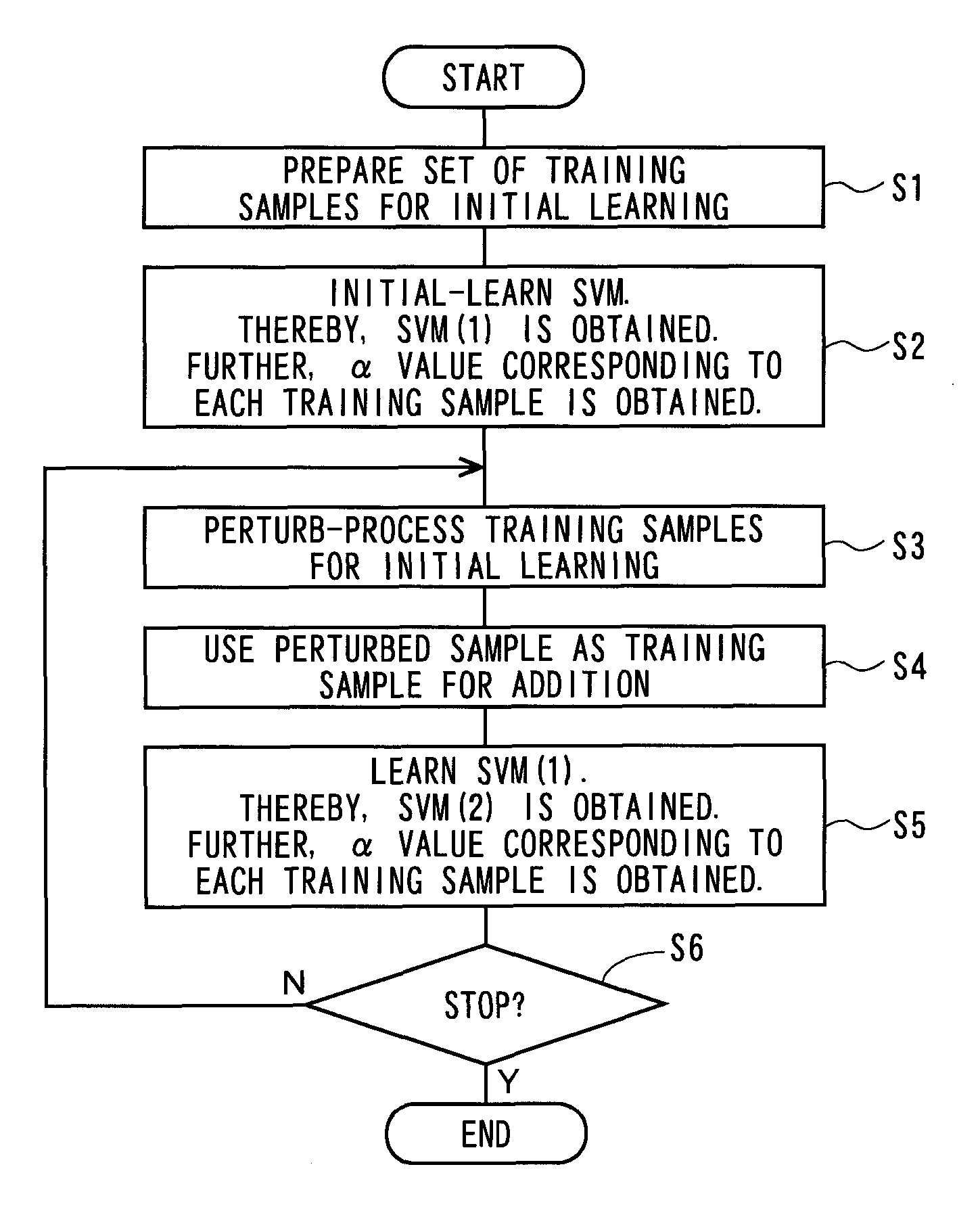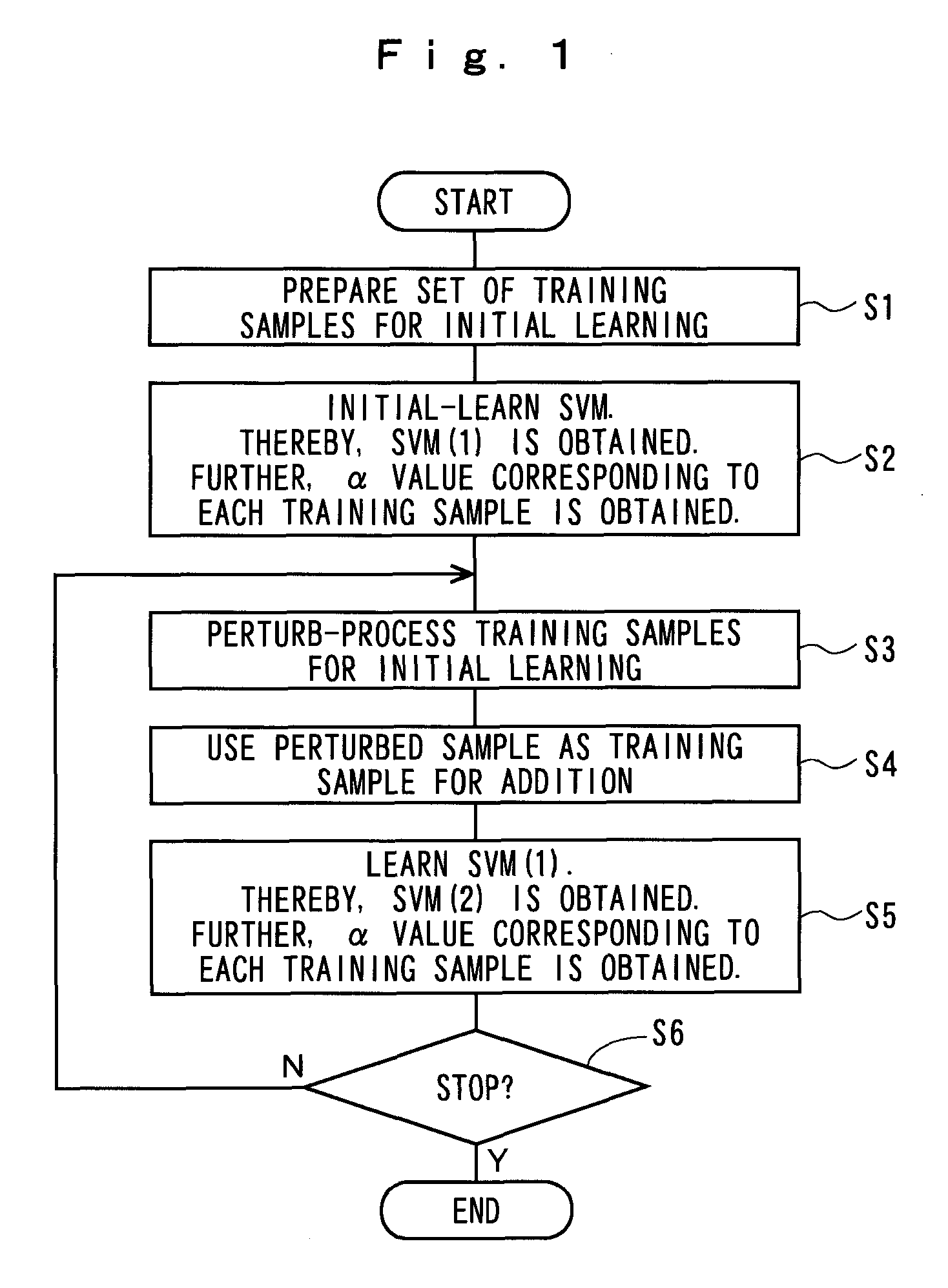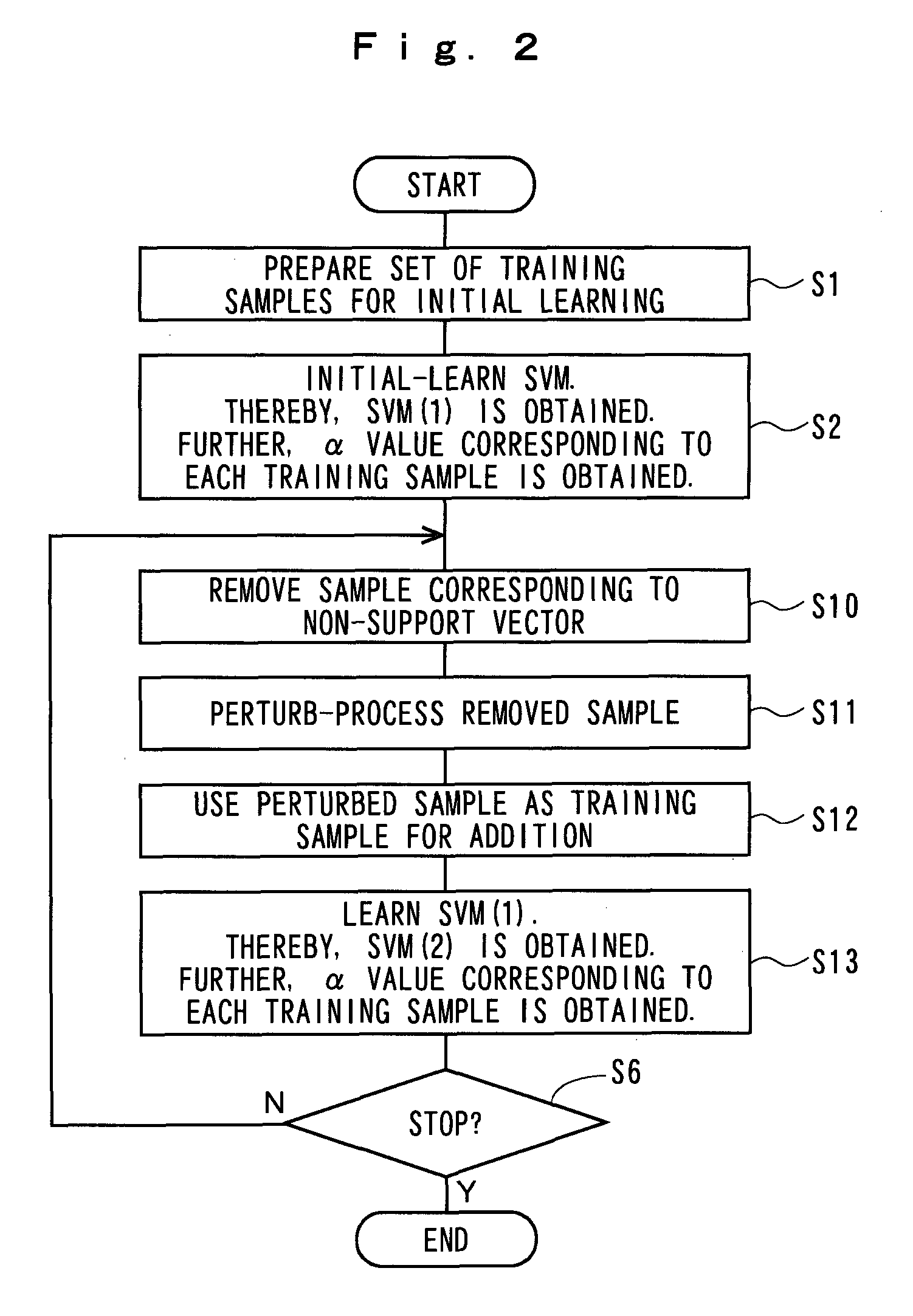Re-learning method for support vector machine
- Summary
- Abstract
- Description
- Claims
- Application Information
AI Technical Summary
Benefits of technology
Problems solved by technology
Method used
Image
Examples
first embodiment
[0026]FIG. 1 is a flowchart showing a brief process procedure of the present invention.
[0027]In this embodiment, luminance conversion and contrast conversion are performed on video data used for learning so as to change a value of a feature amount used for boundary detection (hereinafter, referred to as “perturbation”), whereby a new learning sample is generated.
[0028]First, at step S1, a set of training samples for initial learning is prepared. For the set of training samples for initial learning, data {x1, x2, x3, . . . , xm} having known class labels {y1, y2, y3, . . . , ym} is prepared. At step S2, the set of training samples for initial learning is used to perform initial learning (pilot learning) of SVM. Through this process, a parameter (α value) corresponding to the training sample for initial learning is obtained, as well as an initially learned SVM (1). The meaning of this parameter (α value) will be described later. At step S3, the training sample for initial learning is ...
third embodiment
[0034]Subsequently, the present invention will be described with reference to FIG. 3. In this embodiment, when the outlier is wrongly labeled under the realistic situation that an outlier (deviated value) exists in a set of training samples for initial learning, it is highly likely the perturbation for the outlier adversely affects the re-learning of the SVM. Therefore, since there are also merits in the calculation amount, a target to be perturbed is further limited to support vectors existing on a margin hyperplane (non-bounded support vectors).
[0035]Steps S1 and S2 in FIG. 3 are the same as those in FIG. 1, and as such, description will be omitted. The support vector information at step S2 is obtained by initially learning data for initial learning of a known class label. The support vector information has a misclassification probability of a few percent, for example 2% (=0.02), as described later. Therefore, at step S21, in order that the data wrongly attached with labels is not...
fourth embodiment
[0059]Subsequently, the present invention will be described. In the shot boundary detection problem which is a subject in the present embodiment, the number of shot boundary instances is significantly fewer as compared to that of non-shot boundary instances. Therefore, when a conditional probability indicated by the logistic function obtained by sigmoid training is evaluated, in the support vectors existing on the margin hyperplane on a side of “class of non-shot boundary instances,” the probability of “class of shot boundary instances” is almost zero. On the contrary, in the support vectors existing on the margin hyperplane of “class of shot boundary instances,” the probability of “class of non-shot boundary instances” is somewhat high. As a result, in the present embodiment, the target to be perturbed is limited to support vectors on a margin hyperplane, in which a conditional probability of other classes is equal to or more than a certain threshold value.
[0060]As mentioned above,...
PUM
 Login to View More
Login to View More Abstract
Description
Claims
Application Information
 Login to View More
Login to View More - Generate Ideas
- Intellectual Property
- Life Sciences
- Materials
- Tech Scout
- Unparalleled Data Quality
- Higher Quality Content
- 60% Fewer Hallucinations
Browse by: Latest US Patents, China's latest patents, Technical Efficacy Thesaurus, Application Domain, Technology Topic, Popular Technical Reports.
© 2025 PatSnap. All rights reserved.Legal|Privacy policy|Modern Slavery Act Transparency Statement|Sitemap|About US| Contact US: help@patsnap.com



